[{1 1}]
2024-05-24
5670
Catalog

Figure 1: Fuses
What is a Fuse?
Fuses are essential safety components that protect home appliances like televisions, refrigerators, and computers from high-voltage damage. They contain a thin metal strip, usually made from aluminum, copper, or zinc, that melts and breaks the circuit when excessive current flows through it. This prevents damage by stopping the current flow. Fuses must be connected in series with the circuit to be effective. They come in various types and designs, such as blade fuses for cars and cartridge fuses for household electronics, each tailored for specific applications. Proper installation, regular inspection, and timely replacement of fuses are important for maintaining electrical safety and protecting devices from potential harm.
The Working Principle of a Fuse
The main function of a fuse is to ensure circuit safety by stopping current flow when it melts due to excessive current. To work effectively, fuses must be connected in series with the components they protect. When a fuse blows, it opens the entire circuit, cutting off the current and protecting the devices. In a parallel circuit, blowing a fuse in one branch won't stop current flow in other branches.
Manufacturers encase fuse wires in protective sheaths to minimize the risks of wire burning and electric arc blasts during severe overcurrent. Fuses come in various sizes and shapes, each designed to protect electronic devices based on specific electrical parameters like operating current, speed, time, operating voltage, and the melting point of the fuse element.
In practical use, you need to identify the correct fuse type and rating for your application. Once you have the right fuse, insert it securely into the fuse holder. Regularly check and replace blown fuses to maintain system safety and functionality.

Figure 2: Standard IEEE ANSI Fuse Symbols

Figure 3: IEC Fuse Symbol
The standard IEEE/ANSI symbol for a fuse is a simple line with a break, illustrating where the fuse interrupts the circuit. The IEC symbol is a rectangle with a diagonal line through it. These symbols are used in electrical diagrams to indicate the presence and location of a fuse within a circuit.
Different Types of Fuses

Figure 4: Types of Fuses
Fuses are crucial safety devices in electrical systems, categorized into AC fuses for alternating current circuits and DC fuses for direct current circuits. AC fuses are typically rated for 120V or 240V, matching grid voltages, while DC fuses need to be more voltage-specific due to the nature of DC voltage.
DC Fuses

Figure 5: Cartridge Fuses
Cartridge fuses, also known as glass fuses, are common in many applications. They feature a fuse element enclosed in a glass tube with metal caps at both ends. Variants include slow blow and fast blow fuses, and some are encased in ceramic to withstand high temperatures. These fuses are easy to inspect visually for a blown element.

Figure 6: Automotive Fuses
Automotive fuses are designed specifically for vehicles, operating up to 32V or occasionally 42V. Blade fuses are a popular type, color-coded by their rated current, making them easy to identify and replace in high-power circuits.

Figure 7: Resettable Fuses (Polyfuse)
Resettable fuses contain carbon black particles embedded in organic polymers. When a large current flows, the heat generated causes the polymer to expand, reducing conductivity until the temperature drops. These fuses are beneficial in circuits where frequent fuse replacement is impractical.

Figure 8: Semiconductor Fuses
Semiconductor fuses are ultra-fast fuses used in semiconductor devices that are sensitive to small current spikes.

Figure 9: Overvoltage Suppression Fuses
These fuses protect against voltage spikes using components like Negative Temperature Coefficient (NTC) thermistors and Metal Oxide Varistors (MOVs).
AC Fuses

Figure 10: High Voltage Fuses
High voltage fuses are utilized in AC transmission lines where voltages can exceed several hundred kilovolts. They are designed to safely interrupt high-voltage circuits without causing arc flash.

Figure 11: HRC (High Rupture Current) Fuses
HRC fuses are cartridge-type fuses with a transparent envelope filled with quartz powder or a non-conducting liquid to extinguish arcs. They are reliable in high current applications and provide visible indication when blown.

Figure 12: Expulsion Fuses
Expulsion fuses contain chemicals like boric acid that produce gases to extinguish arcs when the fuse blows. They are commonly used in high-voltage applications and offer effective protection against overcurrent.
Low Voltage Fuses

Figure 13: Low Voltage Fuses
Cartridge Fuses, similar to DC cartridge fuses, these consist of a transparent envelope surrounding the fuse element. They are used in a variety of low-voltage applications, providing clear visibility of the fuse status.
Drop out fuses feature a spring-loaded lever arm that retracts when a fault occurs. These fuses need to be rewired and reset to resume normal operation, making them reusable and practical for certain applications.
Rewireable fuses are simple, reusable fuses used in homes and offices. After they blow, they can be rewired and reset, offering a cost-effective solution for circuit protection.
Striker fuses are equipped with a spring-loaded striker that acts as a visual indicator when the fuse has blown. This striker can also activate other switchgear, providing both protection and immediate visual feedback.
Switch fuses have manually operated handles to connect or disconnect high current fuses, providing both protection and isolation. They are used in applications where manual intervention is necessary for safety and maintenance.
How Fuses Are Classified
Fuses are classified based on their usage and operational characteristics. Choosing the right type ensures that electrical systems are properly protected and can operate safely.
One-Time Only Fuse
One-time only fuses contain a metallic wire that melts and burns out when an overcurrent occurs. When this happens, the circuit opens, and the fuse must be manually replaced to restore operation. This type of fuse ensures the circuit remains open until the overcurrent issue is resolved, providing a clear indication that something needs attention.
Resettable Fuse
Resettable fuses automatically reset after an overcurrent condition is resolved. Once the fuse cools down, it returns to its normal state, allowing the circuit to resume operation without the need for replacement. These fuses are ideal for applications where overcurrent conditions may occur frequently, as they provide continuous protection without ongoing maintenance.
Current Limiting Fuse
Current limiting fuses are designed to produce high resistance when an overcurrent is detected. They quickly interrupt the current flow, minimizing the potential for damage and enhancing safety.
Non-Current Limiting Fuse
Non-current limiting fuses interrupt the current flow without significantly limiting the peak current. They are generally used in less sensitive applications where the rapid interruption of current is not critical. These fuses provide basic overcurrent protection without the added feature of current limitation.
Fuse Response Properties
The response time of a fuse is directly influenced by the amount of current passing through it.
Fast Fuses: Fast fuses react quickly to overcurrent situations, providing immediate protection for sensitive electronic components. These fuses are ideal for devices where even a brief overcurrent can cause significant damage. When a fast fuse is used, it ensures that the circuit is quickly interrupted, safeguarding delicate equipment from harm.
Slow Blow Fuses: Slow blow fuses take a few seconds to blow, making them suitable for applications with temporary current surges, such as motor control systems. This delayed response allows short bursts of current without interrupting the circuit, ensuring reliable operation during startup or sudden load changes. When selecting a slow blow fuse, it’s important to consider the normal operational surges to avoid unnecessary circuit interruptions.
Packaging Sizes of Fuses
AC and DC fuses come in various packaging types tailored to different applications. When selecting a fuse, it’s important to consider several key factors to ensure proper functionality and safety.
Marking
Fuses are marked with essential information such as rated current, voltage, and breaking capacity. This marking ensures that the correct fuse is chosen for the specific application. When inspecting a fuse, always check these markings to confirm it meets the requirements of your circuit.
Temperature Derating
The performance of a fuse can be affected by ambient temperature. Fuses are designed with a derating factor, which means they are rated to operate correctly under different temperature conditions. When selecting a fuse, consider the operating environment and how temperature variations might impact its performance.
Voltage Drop
The voltage drop across a fuse should be minimal to prevent power loss and ensure efficient operation of the protected circuit. When installing a fuse, measure the voltage drop to ensure it is within acceptable limits for your application, maintaining the efficiency and reliability of the circuit.
Speed
Fuses have different response times to cater to the needs of various devices and circuits. Fast blow fuses respond quickly to overcurrent, providing immediate protection for sensitive electronics. In contrast, slow blow fuses are designed to handle temporary current surges without blowing, making them suitable for applications like motor control systems where short bursts of high current are common.
Key Considerations When Choosing Fuses
When selecting a fuse, it’s important to consider various factors to ensure optimal protection and performance.
Current Rating
The current rating indicates the maximum current the fuse can handle without blowing. Choose a fuse with a current rating slightly higher than the circuit's normal operating current. This prevents nuisance blows while still providing adequate protection.
Voltage Rating
The voltage rating is the maximum voltage the fuse can safely handle. Select a fuse with a voltage rating that matches or exceeds the circuit's voltage to prevent electrical arcing and ensure safety.
Breaking Capacity
Breaking capacity refers to the amount of current the fuse can interrupt without damage. Ensure the fuse can safely break the circuit under these conditions.
Time-Delay
Time-delay fuses can handle temporary overcurrent, such as inrush currents during equipment startup. These fuses are ideal for applications where short-term current surges are common, as they allow momentary surges without blowing.
Type of Fuse
Different applications require different types of fuses. Choose between cartridge fuses, plug fuses, rewirable fuses, and others based on the specific needs of the application. For example, cartridge fuses are common in industrial settings, while plug fuses are often used in residential applications.
Environmental Conditions
Consider the environmental conditions where the fuse will operate, including temperature, humidity, and exposure to chemicals or dust. Temperature changes can affect fuse performance, so manufacturers provide derating curves to help select the right fuse for the operating environment.
Operating Characteristics
Understand how a fuse responds to different current levels, including its speed of response (fast blow vs. slow blow). This ensures the fuse can handle normal surges and protect against prolonged overcurrent. Fast blow fuses react quickly, while slow blow fuses tolerate temporary surges.
Size and Shape
Fuses come in various sizes and shapes to fit different applications and mounting requirements. Options range from small surface-mount devices to larger industrial fuses. Ensure the fuse fits the physical and electrical constraints of the application.
Resettable vs. Non-Resettable
Some fuses, like Polymer Positive Temperature Coefficient (PTC) fuses, are resettable and can be reused after cooling down. Non-resettable fuses must be replaced after they blow. Choose based on the maintenance and operational needs of your system.
Materials
Fuses are made from materials like copper, zinc, and aluminum, which affect their conductivity, melting point, and durability. Select a material that matches the application's specific requirements, ensuring reliable performance.
Standard Fuse Sizes in the UK
Fuses are designed with specific power ratings, indicating the maximum current (in amperes) they can handle before blowing. When choosing a fuse, it’s essential to match the fuse’s rating with your device's power requirements. The fuse should respond quickly to current surges to prevent damage or fires, but its rating should be slightly higher than the device's normal operating current to avoid unnecessary blowing during minor surges.

Figure 14: UK Standard Fuses Sizes
3A Fuses
In the UK, 3A fuses are commonly used for household and office devices. These fuses are usually red and protect lower-wattage devices, such as lamps, laptops, desktop computers, photocopiers, printers, soldering irons, and electric drills. The 3A fuse ensures the safe operation of these devices by quickly interrupting the circuit during a surge.
13A Fuses
The 13A fuse, typically encased in brown, is used for higher-wattage devices, handling up to 3,000 watts. You’ll find 13A fuses in appliances like microwaves, kettles, computer servers, test equipment, and heaters. These devices require a higher current rating due to their greater power use. The 13A fuse provides robust protection against overloading and electrical hazards.
5A Fuses
While some older equipment may still use 5A fuses, this size is no longer standard in modern applications. Although once common, modern technology and safety standards have made 3A and 13A fuses the norm. Replacing old 5A fuses with modern equivalents ensures better protection and compliance with current safety standards.
When selecting a fuse, always verify the device's power rating and choose a fuse that offers the necessary protection while allowing for normal operational surges. This careful selection helps maintain the device's functionality and ensures long-term safety.
Advantages and Disadvantages of Using Fuses
Advantages of Using Fuses
Safety:Fuses provide reliable protection by interrupting the circuit when a fault occurs. This interruption ensures that the circuit is completely broken, preventing any further damage or hazard. Each replacement ensures a fresh start, maintaining safety standards.
Cost-Effective: Fuses are one of the most economical solutions for overcurrent protection. Their affordability makes them accessible for a wide range of applications, from household devices to industrial machinery.
High Interrupting Rating: Many low voltage current-limiting fuses can handle significant fault currents without damage. This high interrupting capacity ensures safety even in severe overcurrent conditions.
Reliability: Fuses have no moving parts that can wear out, ensuring consistent and dependable performance over time. Their simple design contributes to their long-lasting reliability.
Compliance with Standards: Fuses in North America must adhere to Tri-National Standards, ensuring uniformity and reliability in their performance. This compliance guarantees that fuses meet specific safety and performance criteria.
Component Protection: Fuses promptly interrupt overcurrent conditions, minimizing or eliminating damage to components. This quick response helps preserve the integrity of the entire system.
Extended Protection: Fuses can adapt to service upgrades and increases in available fault current. This adaptability provides ongoing protection as system demands change, ensuring long-term safety.
Selectivity: Fuses can be coordinated to ensure only the affected circuit is interrupted during overload or short circuit conditions. This selectivity helps maintain the rest of the system's operation, minimizing disruption.
Minimal Maintenance: Fuses do not require periodic recalibration, simplifying maintenance routines. This lack of need for regular inspections reduces overall maintenance efforts and costs.
Long Life: Fuses maintain their protective abilities over long periods, offering durable and long-lasting protection. Their longevity makes them a dependable choice for various applications.
Disadvantages of Using Fuses
Single-Use Nature: Fuses are designed for one-time use. Once a fuse blows, it cannot be reused and must be replaced. This can be inconvenient, leading to downtime, especially if spare fuses are not readily available. In critical systems, the need for immediate replacement can pose significant operational challenges and delays.
Manual Replacement Required: Replacing a blown fuse requires manual intervention, which can be time-consuming and often requires technical knowledge. In complex electrical systems, this process can lead to prolonged downtime and potential safety hazards if not addressed promptly and correctly.
Limited Fault-Tolerance: Fuses cannot distinguish between different types of electrical faults. They blow when the current exceeds their rating but do not provide information about the nature of the fault. Additional diagnostic tools are necessary to identify the underlying cause, adding complexity and cost to the maintenance process.
Delayed Response Time: Certain types of fuses, particularly slow-blow fuses, have a delayed response to overcurrent conditions. This delay can allow minor damage to occur in sensitive electronic components before the fuse blows. While slow-blow fuses are designed to tolerate temporary surges, their delayed action may not offer adequate protection for all applications, particularly those involving delicate or high-value components.
Inconsistent Protection: The protection offered by fuses can be inconsistent due to variations in manufacturing tolerances and environmental factors such as temperature. These variations can affect the current-carrying capacity of the fuse, leading to situations where a fuse might blow prematurely or fail to blow when needed. This inconsistency can compromise the reliability of the protection system and pose a risk to the connected equipment.
Limited Capacity for High-Current Applications: Fuses are generally not suitable for very high-current applications. The physical size and design constraints make it challenging to create a fuse that can reliably interrupt extremely high currents without causing additional hazards. In high-power systems, alternative protection methods such as circuit breakers might be more appropriate, offering higher reliability and easier reset capabilities.
Common Applications of Fuses
Fuses play important role in protecting devices from electrical hazards across various applications. In household appliances like refrigerators, televisions, and washing machines, fuses prevent damage and reduce fire risks by safeguarding against electrical faults and overcurrents. In the automotive industry, fuses ensure the safety and reliability of electrical systems, including the battery, lights, and infotainment systems, by protecting these circuits from potential overcurrents.
In industrial environments, fuses play a huge role in protecting machinery and control systems from electrical damage, thereby preventing costly downtime and ensuring safe operation. Power distribution networks also rely on fuses to maintain stability by interrupting fault currents, protecting transformers, and preventing widespread outages. Small electronic devices such as smartphones, computers, and gaming consoles benefit from fuses that protect them from electrical overloads, thereby extending their lifespan and ensuring safe operation.
Renewable energy systems, including solar panels and wind turbines, use fuses to prevent damage from overcurrents, maintaining the integrity and efficiency of these systems. Fuses are also integral components in surge protectors and circuit breakers, providing an additional layer of safety against electrical surges and spikes. In medical equipment, such as MRI machines and patient monitors, fuses are essential for protecting against electrical hazards, ensuring reliable operation and patient safety.
Lighting systems in homes, offices, and public spaces rely on fuses to prevent electrical faults and overheating, ensuring safe operation. HVAC systems, including heating, ventilation, and air conditioning, use fuses to protect components from overcurrents, thereby ensuring efficient and safe operation. Understanding the role of fuses in these diverse applications highlights their importance in maintaining safety and functionality across various domains.
Fuse vs. Circuit Breaker: Key Differences

Figure 15: Fuses vs. Circuit Breakers
Fuses and circuit breakers both protect electrical circuits from surges or short circuits, but they differ significantly in operation and reuse.
Operability and Reuse
Circuit Breakers function like resettable switches. When a circuit breaker trips due to a surge, you can simply flip the switch back to restore power. This ability to reset makes circuit breakers convenient for long-term use and reduces downtime since there's no need for replacements.
Fuses, on the other hand, are single-use devices. When a fuse blows, it must be replaced. This one-time use acts as a fail-safe, ensuring that the circuit is broken if the current exceeds safe levels. Replacing a fuse requires manual intervention, making it a bit more labor-intensive than resetting a breaker.
Purpose and Design
Circuit Breakers are designed for ease of use and provide long-term protection. They are more convenient because they can be reset quickly without the need for new parts. This makes them ideal for environments where quick restoration of power is crucial.
Fuses are intentionally designed to be the weak link in a circuit. They blow to stop excessive current, protecting other components from damage. Fuses are typically cheaper and can be replaced quickly, but every time they blow, a new fuse is required.
Important Safety Standards for Fuses
Several safety standards govern the design, testing, and certification of fuses. These standards ensure fuses provide reliable protection, meet environmental regulations, and adhere to high safety requirements, making them trusted components in electrical systems worldwide.
UL (Underwriters Laboratories)
UL is an independent, non-profit organization that tests and certifies products for safety. Fuses are covered by UL standard 248-14, which specifies stringent performance and safety requirements. This certification ensures that fuses reliably protect electrical systems from overcurrent conditions.
CSA (Canadian Standards Association)
The CSA is a Canadian organization that tests and certifies products to meet national safety standards. The CSA standard C22.2 No. 248.14-14 outlines specific requirements for fuses, certifying that they meet rigorous safety and performance criteria applicable in Canada.
IEC (International Electrotechnical Commission)
The IEC develops and publishes international standards for electrical and electronic equipment and systems. Fuses are governed by IEC standard 60269, which provides comprehensive guidelines for their design, application, and testing. This standard ensures that fuses meet global safety and performance standards.
RoHS (Restriction of Hazardous Substances)
The RoHS directive, established by the European Union, restricts the use of certain hazardous substances in the production of electronic equipment, including fuses. This directive aims to reduce environmental impact and improve product safety by limiting substances like lead, mercury, and cadmium.
CE (Conformité Européene)
The CE mark indicates that a product has met EU safety, health, and environmental protection requirements. Fuses bearing the CE mark comply with relevant European directives, ensuring they are safe for use within the EU and meet rigorous quality and safety standards.
Conclusion
With various types designed for specific applications, such as AC and DC fuses, selecting the right fuse involves considering factors like current rating, voltage rating, and breaking capacity. Though they need replacement after each use, fuses remain cost-effective and reliable, ensuring safety. Understanding and choosing the appropriate fuse enhances electrical safety and system reliability.
Frequently Asked Questions [FAQ]
1. How can you determine if a fuse has blown?
To determine if a fuse has blown, follow these steps:
Visual Inspection - Look at the fuse through its transparent casing. If the metal wire inside is broken or the casing is discolored (blackened or cloudy), the fuse is likely blown.
Multi-meter Test - Set a multi-meter to the continuity setting. Place the probes on each end of the fuse. A blown fuse will not show continuity (the multi-meter won't beep or show zero resistance).
Fuse Tester - Use a dedicated fuse tester. Insert the fuse into the tester. If the tester does not light up or indicate continuity, the fuse is blown.
2. What typically causes a fuse to blow?
The main reason for a blown fuse is an electrical overload or short circuit. This can happen due to:
Overloading Circuits - Plugging too many devices into one circuit, exceeding its capacity.
Short Circuits - When a hot wire touches a neutral wire or ground, creating a low-resistance path that allows excessive current flow.
Faulty Devices - Malfunctioning appliances or components that draw too much current.
Wiring Issues - Damaged or frayed wires that cause current to flow where it shouldn't.
3. What is the expected lifespan of a fuse?
A fuse should last indefinitely as long as it operates within its specified current rating. It will only blow if there is an overload or short circuit. Properly rated fuses for their applications can last many years without issues.
4. Are fuses expensive?
Fuses are generally inexpensive. Prices vary depending on the type and rating, but common automotive or household fuses typically cost between a few cents to a few dollars each. Specialty fuses for industrial or high-voltage applications may be more expensive.
5. Which type of fuse is most commonly used in modern vehicles?
The most commonly used fuses in vehicles today are blade-type fuses. These include:
Mini Blade Fuses - Smaller in size, used in modern compact fuse boxes.
Standard Blade Fuses - Slightly larger, used in various vehicle electrical systems.
Maxi Blade Fuses - Larger still, used for higher current applications.
6. How can you identify the type of fuse?
To identify the type of fuse, check the following:
Physical Size and Shape - Blade fuses, glass tube fuses, and ceramic fuses all have distinct shapes and sizes.
Color Coding - Blade fuses often have a color code indicating their amperage rating.
Markings - Look for printed information on the fuse, such as amperage rating and voltage rating.
Consult the Vehicle Manual - The vehicle's manual or the fuse box cover usually has a diagram or list indicating the types and ratings of fuses used.
7. What materials are commonly used to make fuses?
Commonly used fuse materials include:
Fuse Element - Typically made of zinc, copper, silver, or alloys, which melt when overheated.
Fuse Body - Often made of glass, ceramic, or plastic, providing insulation and physical protection.
Contacts - Made of brass, copper, or other conductive materials to ensure good electrical connection.
 FAATATAU IA TATOU
Tagata faamalieina i taimi uma.Agaalofa ma le talitonuina ma fiafia masani.
FAATATAU IA TATOU
Tagata faamalieina i taimi uma.Agaalofa ma le talitonuina ma fiafia masani.
suʻega suʻega.O oloa aupito pito sili ona maualuga tau ma le tautua sili o lo tatou tautinoga faavavau.
![[{1 1}]](/upfile/blog/small_2024052417103938711.png) [{1 1}]
[{1 1}]
2024-05-24
![[{1 1}]](/upfile/blog/small_2024052414204750351.png) [{1 1}]
[{1 1}]
2024-05-24
VAI VAEGA Numera
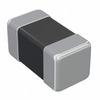 UMK105CG1R2CV-F
UMK105CG1R2CV-F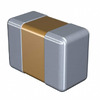 C1005X7R1H473M050BB
C1005X7R1H473M050BB CC0805KRX7R8BB471
CC0805KRX7R8BB471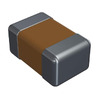 08053C472MAT2A
08053C472MAT2A CC1206KKX7RBBB821
CC1206KKX7RBBB821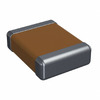 12105C393KAT2A
12105C393KAT2A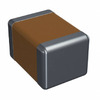 1812HC152KATBE
1812HC152KATBE F970J336KCC
F970J336KCC TPSW336M016R0250
TPSW336M016R0250 TPSE476K020R0200
TPSE476K020R0200
- A40MX02-FPLG68
- EP2SGX60DF780C4
- MAX17121ETG+T
- VI-2W1-MW
- R5F104LFAFB#V0
- ENC28J60T-I/SO
- HIN211EIB
- MCP6031T-E/OT
- HCPL-4534-000E
- MAX1490ACPG+
- VI-2N0-IV
- VI-J6R-MX
- VE-261-EY
- 6MBI10GS-060D
- TPS78330DDCR
- TS3L500AERHUR
- LT3782EFE#TRPBF
- LQW18AN13NG00D
- T491C227K010ZT
- TLC2274QPWRG4Q1
- ADUM3223BRZ-RL7
- LTC1879EGN#PBF
- TLV2462IDGK
- HMC394LP4
- NUF2222FCT1G
- A4937KLPBTR-T
- DS2172T+TR
- GPDV6632A-001A-QL091
- ICS9DB803DGLF
- MC912D60AVPV8
- MSC1211Y3PAG
- R5F21357CNFP
- SM89516A-L25J
- TMS104WAIDR
- NMI326-ADA
- AIC3106IRGZR01
- OR2T04A-4T144-DB
- YMU831-CZE7
- BCAP3400P285K04